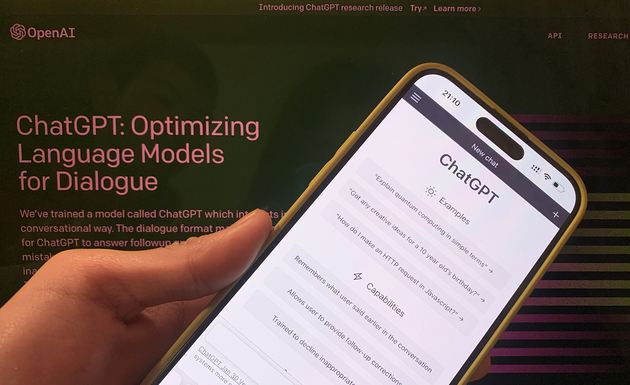
Photo/Liu Xuemei (NBD)
NO.1 Apple Launches MM1 Multimodal Large Model
Recently, Apple officially announced the research results of the MM1 multimodal large model in a paper titled “MM1: Methods, Analysis & Insights from Multimodal LLM Pre-training.” The model comes in three parameter scales: 3 billion, 7 billion, and 30 billion, and possesses capabilities in image recognition and natural language inference. Comprising dense models and Mixture of Experts (MoE) variants, it not only achieves optimal results in pre-training metrics but also maintains competitive performance after supervised fine-tuning on a series of existing multimodal benchmarks.
Commentary: Apple’s breakthrough technology demonstrates its achievements in the multimodal AI field, contributing to industry innovation.
NO.2 NVIDIA’s GTC 2024 Set to Unveil
From March 18th to 21st, NVIDIA’s GTC conference will take place at the San Jose Convention Center and online. Recognized as an “AI barometer,” this is one of NVIDIA’s most important annual technology platforms. It is expected that NVIDIA will unveil the Blackwell architecture and the B100 chip at the conference. As the next-generation product of the Hopper architecture H200 chip, NVIDIA has already showcased the robust performance of the B100 chip at the Global Supercomputing Conference, outperforming the H100 and H200 chips in training the GPT-3 175 billion parameter model. Additionally, NVIDIA may release a series of generative AI applications.
Commentary: NVIDIA’s upcoming new technology could further solidify its market dominance in high-performance computing and AI.
NO.3 CAR-T Therapy Shows Effectiveness Against Solid Tumors
Recent studies published in “Nature Medicine” and “The New England Journal of Medicine” indicate that Chimeric Antigen Receptor T-cell (CAR-T) therapy has shown treatment effects in clinical trials against solid malignant brain tumors—glioblastoma. Glioblastoma is the most common malignant brain tumor in adults. Past attempts to combat this brain tumor using the immune system have failed, leaving patients to rely on traditional drugs, radiotherapy, and chemotherapy, with only modest improvements in average survival rates.
Commentary: This clinical advancement could open a new chapter in the treatment of solid tumors, profoundly impacting the entire medical industry.
NO.4 Mercedes-Benz Factory Pilots Apollo Robot
Mercedes-Benz recently announced a partnership with humanoid robot developer Apptronik to explore the high-tech robot Apollo, primarily for heavy, low-skill labor such as carrying and assembling parts. Under the agreement, Mercedes-Benz will initiate a pilot project to test the capabilities of the Apollo humanoid robot in performing various tasks during the car manufacturing process. Mercedes-Benz claims that compared to a comprehensive upgrade of the car production line, the use of Apollo robots can reduce employee injuries, automate complex, repetitive, and tedious tasks, and further unleash productivity.
Commentary: Mercedes-Benz’s move could improve production efficiency while reducing labor intensity for workers.
NO.5 ChatGPT Parameter Scale Possibly Deciphered
Researchers from the University of Southern California have used a method to crack the parameter scale of the latest GPT-3.5-turbo model for less than $1,000. According to the research report, the researchers deciphered the undisclosed embedding vector dimensions of GPT-3.5-turbo as either 4096 or 4608. Almost all known open-source large models, such as Llama and Mistral, have a parameter scale of 7B (7 billion) when the embedding vector dimension is 4096. The USC research team suggests that the parameter scale of GPT-3.5-turbo is also likely around 7B.
Commentary: This discovery may prompt further discussions and improvements in model transparency and security within the AI field.
NO.6 Sora Training Data Under Scrutiny
In a recent interview, OpenAI’s CTO Murati was evasive about Sora’s training data, plunging Sora into copyright controversy. When asked about the data used to train Sora and whether videos from YouTube, Facebook, and Instagram were utilized, Murati was vague, stating uncertainty and declining to reveal details about the data used. However, he emphasized that the company uses publicly available and licensed data. Previously, OpenAI has been frequently embroiled in copyright lawsuits. At the end of last year, “The New York Times” filed a copyright infringement lawsuit against OpenAI and Microsoft, accusing them of using millions of its articles to train models without permission.
Commentary: This could affect OpenAI’s reputation in the AI field and exacerbate the risk of copyright litigation.
Disclaimer: The content and data in this article are for reference only and do not constitute investment advice. Verify before using.


 川公网安备 51019002001991号
川公网安备 51019002001991号





